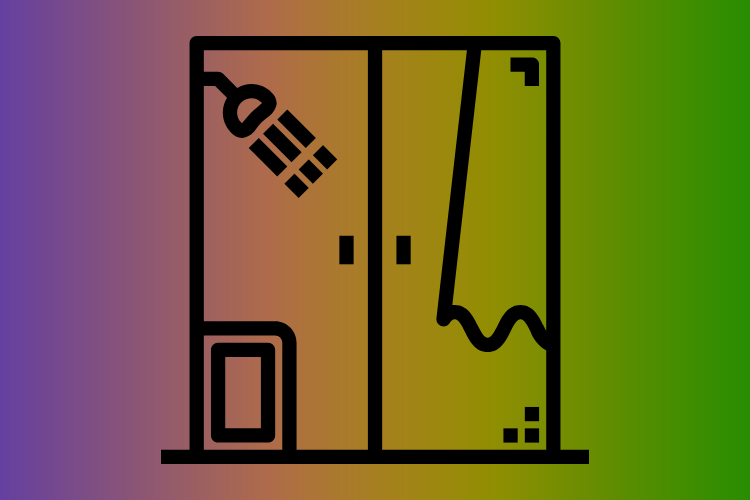Turning Your Bathroom into a Wet room You Always Wanted
The luxury of a wet room is something which many of us enjoy when staying in a hotel. Replicating that top-end, luxury hotel bathroom feel in our own homes can be tricky, and most homeowners will agree that fitting a wetroom is tricky, time-consuming and expensive. But is this necessarily the case? There are tips which will help many homeowners complete the project without breaking the bank.
Plan Your Wet Room Project
Ever heard the old saying that if you fail to plan, you plan to fail? That’s definitely the case with installing a wet room, and time spent getting the design right and researching the products you need at this stage will pay off in the long run. The defining feature of a wet room is that have clean lines and a minimalist appearance, and for this reason people fall into the trap of thinking that they don’t have to do much planning or design as it’s all so simple. That’s perhaps true for the finishing touches, but the real planning in creating a wet room goes on at the earlier stages of the project, making sure that you are creating the waterproofing needed to make a real wet room.
Although creating a wet room is a project which a competent DIYer can tackle themselves, most people choose to get a professional in to tackle the job. Overall this will cost more than the DIY option as you are paying a premium to have someone else do the planning and project management along the way. However, there is nothing stopping you taking on the job yourself, as long as you know what you’re letting yourself in for.
The first planning step is pulling together a clear idea of what your finished room is going to look like. Where are you locating the shower? Will the toilet and wash hand basin remain where they are? Sketch out a rough plan as working out what you expect the end result to look like will help clarify the steps you need to achieve it.
Thinking About Drainage for your Wet Room
The whole ethos of a wet room is that the entire room is treated as a shower tray, and the water drains away into the corner of the room. In order to do this, the floor needs to slope very gently towards your drainage point, which is usually located in the corner of the room. Think about the path the water will take from the shower to the drain, and construct your plans to ensure there is nothing blocking the water’s path.
Choosing Tiles for your Wet Room
Most wet rooms are tiled across the floor and the walls, and if you’re looking at very expensive tiles then the cost of tiles alone can run into the thousands. That’s not to say you can’t choose a more expensive looking tile, but a good designer trick is to choose a basic tile for the floor and walls, and a coordinating designer or patterned tile to use as an “accent”, perhaps in a vertical or horizontal stripe around the shower, above the sink, or on one wall only. Whichever tiles you choose, you should be looking for a range which is durable and very easy to clean
Wet Room Heating
Wet rooms can often be cold, especially in winter months. You have a range of heating options, including underfloor heating as the luxury option, and a standard towel rail or radiator if you are a little more budget conscious.
Get the Right Shower for your Wet Room
Although the style of a wet room means you won’t need a shower tray, you will still need an enclosure of some sort to stop the entire room being soaked as you shower. The shower is often the main focal point in a wet room, so take some time over this decision and make sure you get the right one. Measure the room and spend some time thinking about where the shower enclosure is best located. At this stage, it’s usually best to consider the shower enclosure and the shower head together as a package. Rainfall shower heads are the most popular choice in a shower room but are not the only option; spend some time looking online at the different options to see which one works best for you and your home.
Decorating Choices in a Wet Room
Tiles aren’t the only option in a wet room. If you are going for a really industrial look in your bathroom, then look at alternatives such as polished concrete for the floors, or tiles with a metallic finish. If you live in a period property, then consider metro tiles and traditional exposed pipework for your wet room project. Paint can be used in a wet room in conjunction with tiles and this is the perfect opportunity to go bold with your choice, perhaps a peacock blue or bright orange? The beauty of paint is that it’s cheap to buy and easy to replace if you get bored of the colour you chose originally. Choosing a style of tile in your bathroom which will work with many different colours and styles of paint will allow you the flexibility to change more regularly as your preferences change.
Other Items of Furniture for your Wet Room
As well as the shower you’re going to need a toiler, wash hand basin and perhaps some storage for your bathroom too. The best option is often a sink unit with drawers or cupboard space underneath. As these units come in a huge range of sizes, measure your space carefully and think about how much space you really need – bigger isn’t better if an oversized sink or vanity unit makes it awkward to get into the shower or use the room comfortably.
Most wet rooms are smaller spaces, and you can make them seem bigger by adding a mirror to reflect light around the room. A fancy mirror is a great way of adding another little bit of luxury, perhaps by choosing a mirror with LED lighting, or a built-in Bluetooth music speaker. Think about where you’re going to position the mirror, although the best choice is probably still above the sink.
Often, it’s best to buy your shower enclosure, toilet and other items of bathroom furniture at the same time, or from the same retailer. This will ensure a consistent, matching finish and appearance for all items in the room. If you are prepared to shop around then it’s possible to bag a real bargain by choosing end of range items, returns, or ex-display items from your high street bathroom supplier. If you are buying everything from the shower enclosure to the grout from the same retailer, you’re in a stronger position to negotiate a bit of a discount from the retailer.
What Costs Are Associated With Installing a Wet Room?
It’s really difficult to come up with an average figure for installing a wet room as every home and project is different. Depending on what you are planning to do, you may need to involve Building Control and the services of a professional plumber, or you might be able to take on the whole job yourself. On average, the cost of converting a shower room into a full wet room costs anything between £4000 and £10,000. This figure includes everything from adjusting the slope on the floor, ensuring the room is waterproofed properly, buying and fitting the shower, the tiling and all finishing touches like decoration. If you can take on a lot of the work yourself, you will cut this figure considerably.
Process of Turning a Bathroom into a Wet Room
The main aspect of your new wet room is the sloping floor to allow drainage. Several companies sell kits which help you with creating the gentle slope which usually involve installing a new floor above the level of your existing floor. The floor will also require a waterproof layer to be added before the layer of tiles. This is known as tanking, and will stop water from the shower getting through the gaps between the tiles and causing damage to the structure of your home. Tanking is usually a layer of waterproof screed which is applied to the floors and allowed to dry before the tiles are laid on top. For the walls, a flexible sheet of membrane which looks like a thin sheet of rubber or plastic is often used instead.
Depending on the design, you might need to tank the walls too. If you’re at all unsure about the waterproofing process then it is advised to get a professional in to advise, even if it’s just on this small part of the project. Water seeping into floors and walls can do substantial damage over time, and the repair work is likely to cost a lot more than the cost of getting a plumber in for a couple of hours on an advisory basis.





